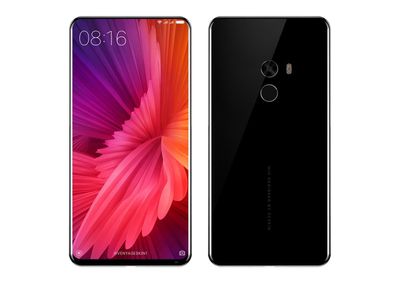China-based smartphone vendors are set to follow Apple lockstep into the all-screen handset era as competition in the Chinese smartphone market heats up in the second half of 2017 (via DigiTimes).
With much of the media attention focused on the imminent launch of Apple's "iPhone 8" with edge-to-edge OLED display this September, rival mobile makers including Huawei, Xiaomi, and Gionee have been quietly pushing ahead with their own all-screen alternatives.

Following a successful comeback in the Chinese smartphone market in the first half of 2017 after a setback the previous year, Xiaomi plans to further enhance its position with the upcoming release of its Mi Mix 2, according to industry sources.
MacRumors readers may recall the company's first Mi Mix which raised eyebrows in October 2016 for its almost bezel-free design, despite largely being considered a "concept phone" rather than a mass market device. The second-generation model aims to change that perception, with Xiaomi set to boost supply in order to grab more market share.
Meanwhile, Huawei has reportedly stepped up its purchases from component suppliers since the beginning of the third quarter for a planned rollout of its next-generation flagship model, the Huawei Mate 10. The device is said to feature a 6-inch 18:9 (2:1) all-screen AMOLED display from Japan Display.
Elsewhere, Gionee will continue its aggressive strategy – which began with the release of the world's first four camera (dual front and back camera) phone, the Gionee 10 – by rolling out all-screen models of its flagship devices in time for the second half of 2017, according to sources.
Even smaller mobile vendors have gotten in on the act, with Japan-based Sharp making a return to China's smartphone market recently with the launch of its all-screen model, the Aquos S2, priced at CNY2,499 ($375), targeting the mid-tier segment.
Last year Apple experienced its first ever year-over-year decline in the Chinese smartphone market, with the company's phones continuing to be outpaced by cheaper alternatives and the iPhone 7 failing to kick up a frenzy among consumers compared to previous launches, according to analysts.
Apple faced a similar story at the beginning of the current year. Despite recording record results, Apple's Q1 2017 earnings call revealed revenue was down 8 percent in China, but CEO Tim Cook claimed half of that decline was down to currency devaluation.
Apple currently stands in fifth place in China's booming smartphone market, where combined sales reached 131.6 million units in the fourth quarter of 2016, accounting for nearly a third of worldwide shipments.
It remains to be seen whether the iterative "S" cycle updates to its iPhone 7 range due this fall, combined with the appeal of a premium alternative in the form of the so-called "iPhone 8", will help to boost its success in these booming Sino markets, which are typically dominated by cheaper-priced, high-spec handsets.






















Top Rated Comments
Isn't it the other way around?
Apple is riding the wave of Chinese brands (and Samsung) which introduced full screen models quite some time ago.
The ads for the Galaxy S8 in London have been insane.
Apple = paying an insane amount of money for inferior hardware a year after your colleagues showed you the tech in their Android phones.
If the Android OS hadn't been utter tripe, I would have switched ages ago.
[doublepost=1503483554][/doublepost]Seriously? How quickly do you think they can design, develop and release these products? It doesn't happen in three months. Besides, it is clear from their previous releases that they have been heading in the full screen direction for years.
I'd hardly call it "riding the iPhone 8 wave", as good as the next iPhone could be.